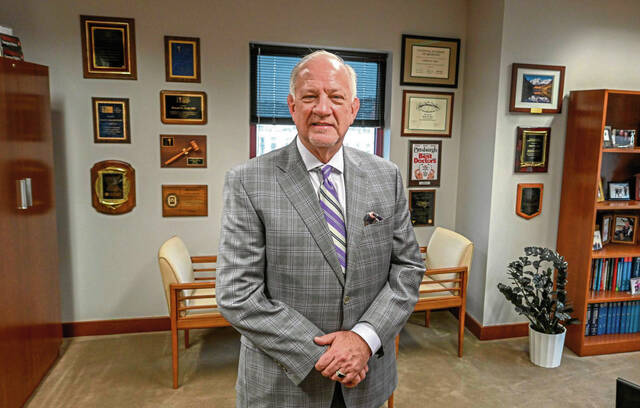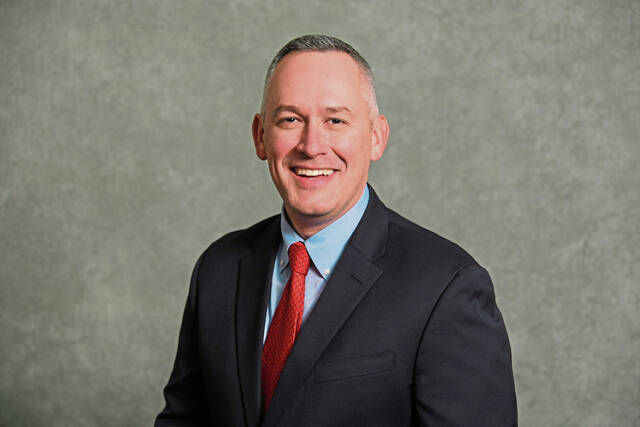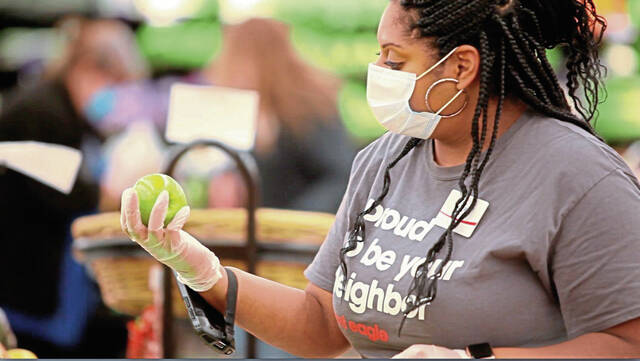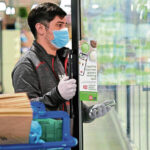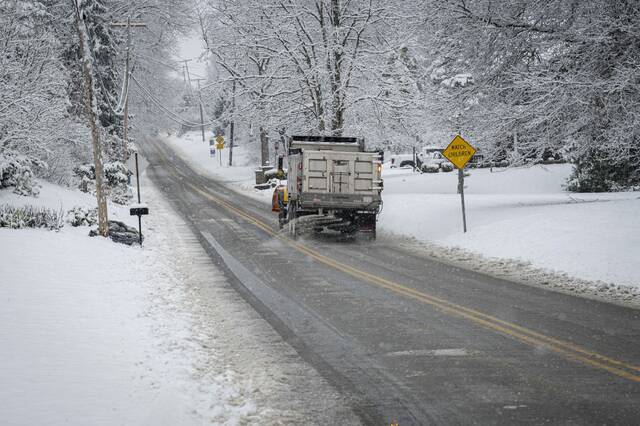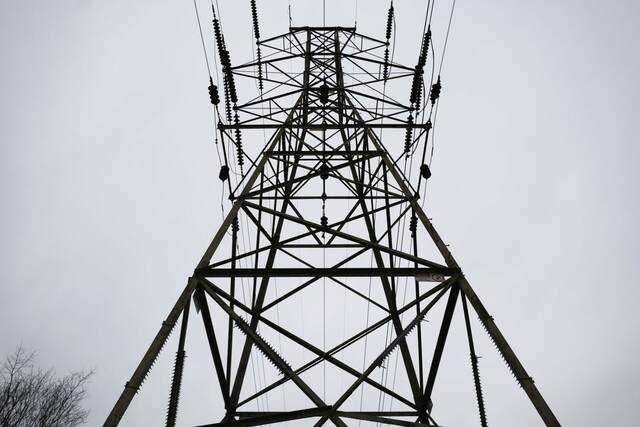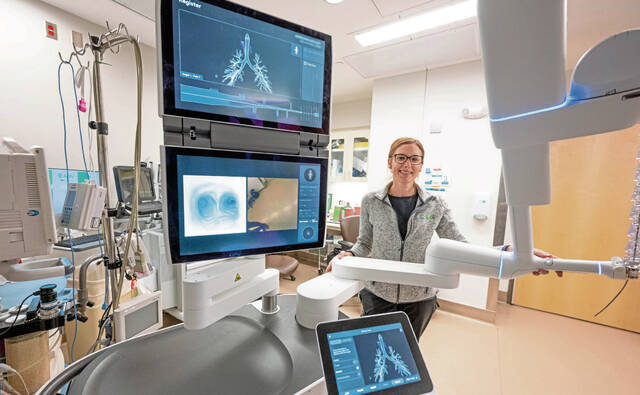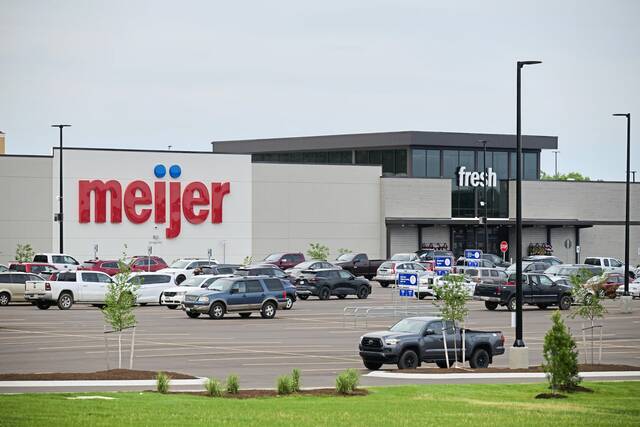Ordinary shopping trips became a scavenger hunt five years ago.
Shoppers who felt fortunate enough to find toilet paper quickly filled their carts. Demand soared for items such as masks, lumber, liquor and computer chips.
As covid-19 swept across the United States, empty store shelves spurred anxiety, heightened tensions and brought the previously little-considered term “supply chain” to mainstream America.
The global crisis that has killed more than 7 million people and made “social distancing” a common phrase schooled people on preparedness, from businesses to schools to the health care industry.
Some say lessons learned over the past five years leave society better equipped to handle another such scenario.
“Supply chain issues were a pandemic wake-up call,” said Mike Sherwin, assistant professor of supply chain management at Duquesne University. “Prior to covid, we had a robustness in supply chains that allowed us to have waste. Companies had enough inventory to make up for demand volatility.
“When covid hit, demand and supply was huge at the same time, and it ate up inventory immediately.”
It didn’t just prompt a global shortage of raw materials. Factories closed because of “stay-at-home” orders; other work stoppages were blamed on employee sickness or plain wariness. Shipping containers bottle-necked ports, and truckers took on mounting delivery schedules.
Medically speaking, hospitals that largely operated independently began sharing notes on best practices.
“What we took away was learning to prepare for something that, by definition, you couldn’t be all that prepared for,” said Dr. Donald Yealy, UPMC chief medical officer and senior vice president of the health services division. “We learned the value of early and frequent communication. Of course, we knew that, but covid magnified it.”
Yealy was among 12 of the top medical experts to comprise the Western Pennsylvania Regional Chief Medical Officer Consortium, which also included Dr. Carol Fox of Excela Health (today part of Independence Health), Dr. Donald Whiting of Allegheny Health Network and Dr. Ali Sonel of the Pittsburgh VA Healthcare System.
The group met regularly to communicate about pandemic maneuvers.
“It was a way to reach out to one group instead of making 30 phone calls,” Yealy said. “It wasn’t about competition or market concerns. It was about leadership and how to do the best we can for the most people.
“We still do this today.”
Government overreach
Along with shutdown orders and mask mandates came complaints of government overreach. Today, that is something easier to identify, said Richard Frank, senior fellow in economic studies at the Brookings Institution.
Although time seemed to creep along in many aspects of life, it also moved at light speed in others.
Covid vaccines were the fastest developed in history, with the first shot distributed in December 2020 — less than a year after the outbreak.
To thwart spread of the virus, Yealy said, the consortium had to move quickly. Research that would’ve typically taken three to five years was completed in six to eight months, he said.
“We didn’t sacrifice the rigor of the research, but we didn’t allow debate to drag on,” Yealy said.
“Scientists were making their best guesses in situations they’d never seen on that scale,” said Frank, director of the Center on Health Policy at Brookings, a Washington, D.C., think tank. “Because covid could spread easily, the public health world took what they knew about spread and took an aggressive stance. There were refrigerator trucks (for covid fatalities) stacked up outside hospitals in New York. An aggressive stance was reasonable.”
A study by Duke University professor Gavin Yamey and Drexel University professor Ana Roux blamed poor federal communication and policy failures for some level of public pandemonium.
“Even after studies had shown that fomite transmission was rare and transmission outdoors was much less common than indoors, some municipalities and states kept parks, playgrounds and beaches closed,” the pair wrote in a 2024 editorial. “Even after research had shown that schools could be reopened safely with basic public health measures, too many jurisdictions kept teaching online only.”
The result today is a weary public, Frank said.
“There’s been, over time, an erosion of trust or belief in science, and that spills into medicine,” he said. “In part, that was spurred by people’s perception that their autonomy and civil rights were being trampled on by public health edicts, vaccines and masks.”
In retrospect, people were trying to do the best they could, Frank said. But there was much hysteria and misunderstanding.
“You saw all kinds of crazy stuff — people proposing to use bleach or taking special vitamins,” he said. “In the panic, people were just grasping for things which may have seemed crazy at the time, but in retrospect were really bonkers.”
Ramifications of the pandemic proved steep beyond the death toll.
The disease cost the federal government $16 trillion in its first year, according to David Cutler, an Eckstein professor of applied economics, and Lawrence H. Summers, former U.S. secretary of the Treasury.
The pair estimated that through fall 2021, the pandemic spurred $7.6 trillion in lost economic output; $4.4 trillion in losses due to premature deaths; $2.6 trillion in health care costs associated with long-term complications among survivors; and $1.6 trillion in increased mental health costs — if effects lasted only a year.
Projections were made in the early days of the outbreak when then-political leaders suggested the disease would be contained quickly.
But covid had other plans. To date, the economic loss is more than twice the total spending for all the wars the U.S. has fought since 9/11, according to the National Institutes of Health.
Vulnerabilities exposed
The pandemic brought unexpected ramifications outside the health care industry. It disrupted global supply chains and exposed weaknesses, compelling companies to retool strategies.
“When we couldn’t get toilet paper or hand sanitizer, supply chain issues hit home,” said Sherwin, of Duquesne’s Palumbo-Donahue School of Business.
Liberty Street Economics, a platform run by the Federal Reserve Bank of New York, found the effects were far-reaching: About 70% of service firms and 90% of manufacturers reported supply disruptions impeded business into late 2021.
“It definitely was an interesting time in the grocery industry,” said Jannah Drexler, public relations manager at Giant Eagle. “As we think back to the early stages where a lot of nonessential businesses weren’t able to be open — grocery stores were one of the only places you could still be out in person. It put a lot of pressure on us to be able to adapt to all of the different mandates.”
There were occupancy limits, social distancing guidelines, plexiglass at registers and floor markings to keep people properly spaced.
On the logistics side, it was a challenge for Giant Eagle, a regional grocer, to get items to its more than 210 markets across Pennsylvania and Ohio.
Giant Eagle is a self-distributor, which means it is positioned to tackle supply chain issues more easily than some, but there were still outside obstacles to overcome.
“The volume of paper products were among the most highly sought-after items, so we had to reimagine that delivery schedule,” Drexler said. “Instead of a truck going to three or four stores in a day, they took a higher volume to one or two stores.
“We all saw a lot of tendencies to bulk purchase because people didn’t know when they’d find the item again. Having warehouses full of supplies put us in a position to better meet demand, but that’s still not to say it was easy.”
Sherwin is hopeful the lessons propelled supply chain resilience policies to the forefront.
Moves toward “near-shoring,” shifting operations geographically closer, could benefit companies with reduced transportation costs and diversified manufacturers.
One example of industry that was hard hit during covid is semiconductor hubs in the Asia-Pacific region.
“We need to diversify where they’re made and bolster capacity in the U.S. so we’re not as vulnerable to external forces,” Sherwin said.
Still, urgency fades as time passes.
“Human nature is to focus on what’s immediate and not the past,” he said. “I’m hoping that momentum, in terms of awareness, gets to implementation so we are more prepared for the next time.
“It’s good to have the fire extinguisher, but better to do the things that prevent the fire.”



